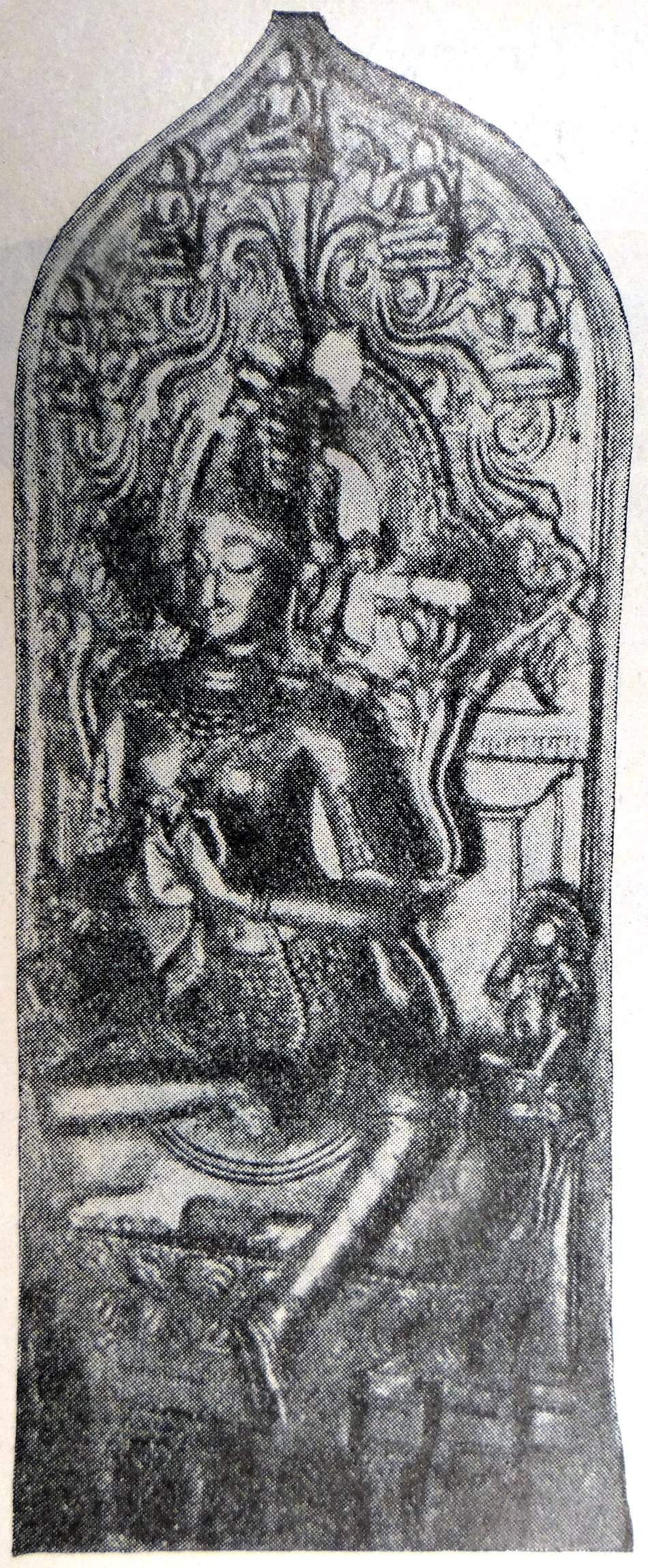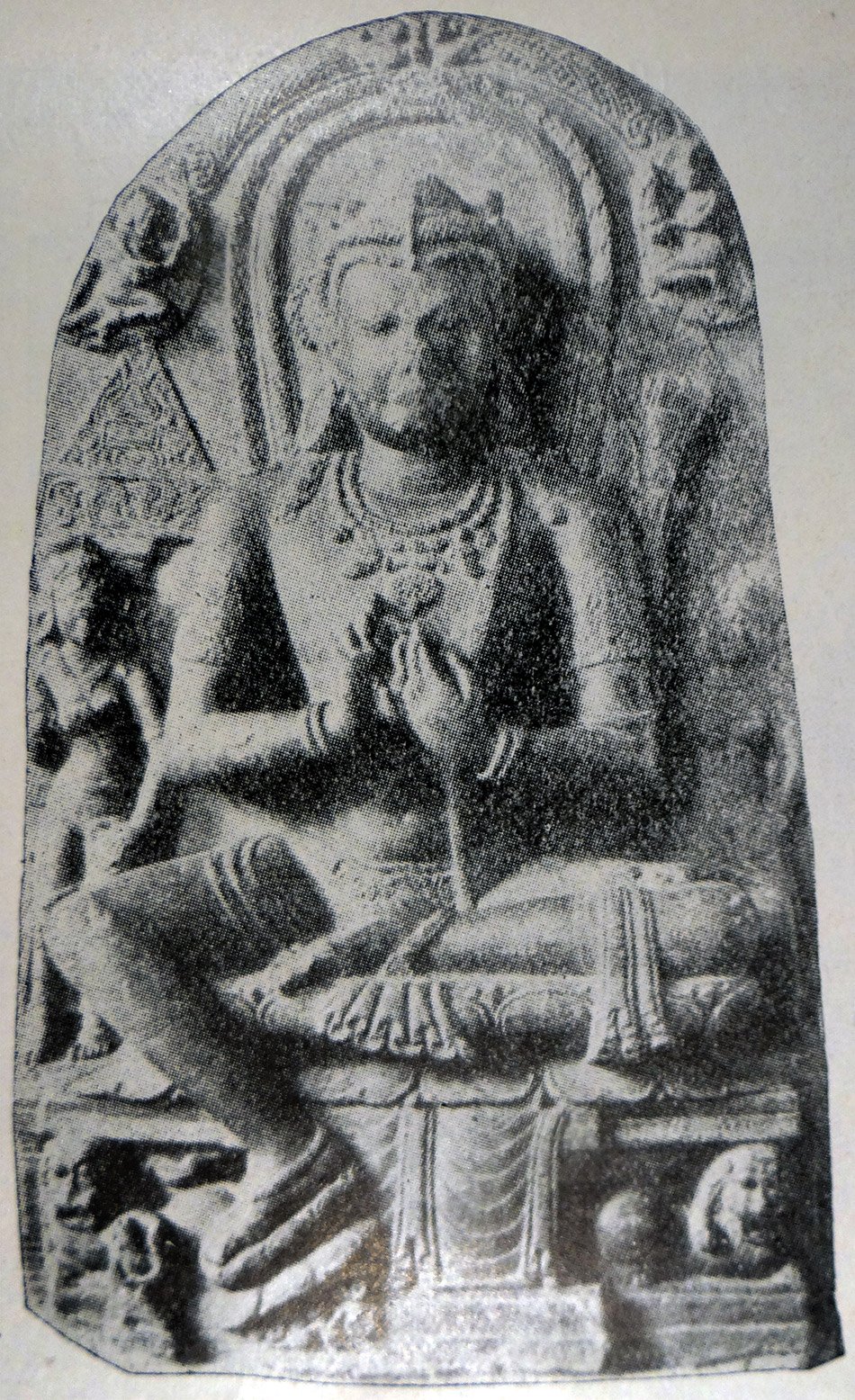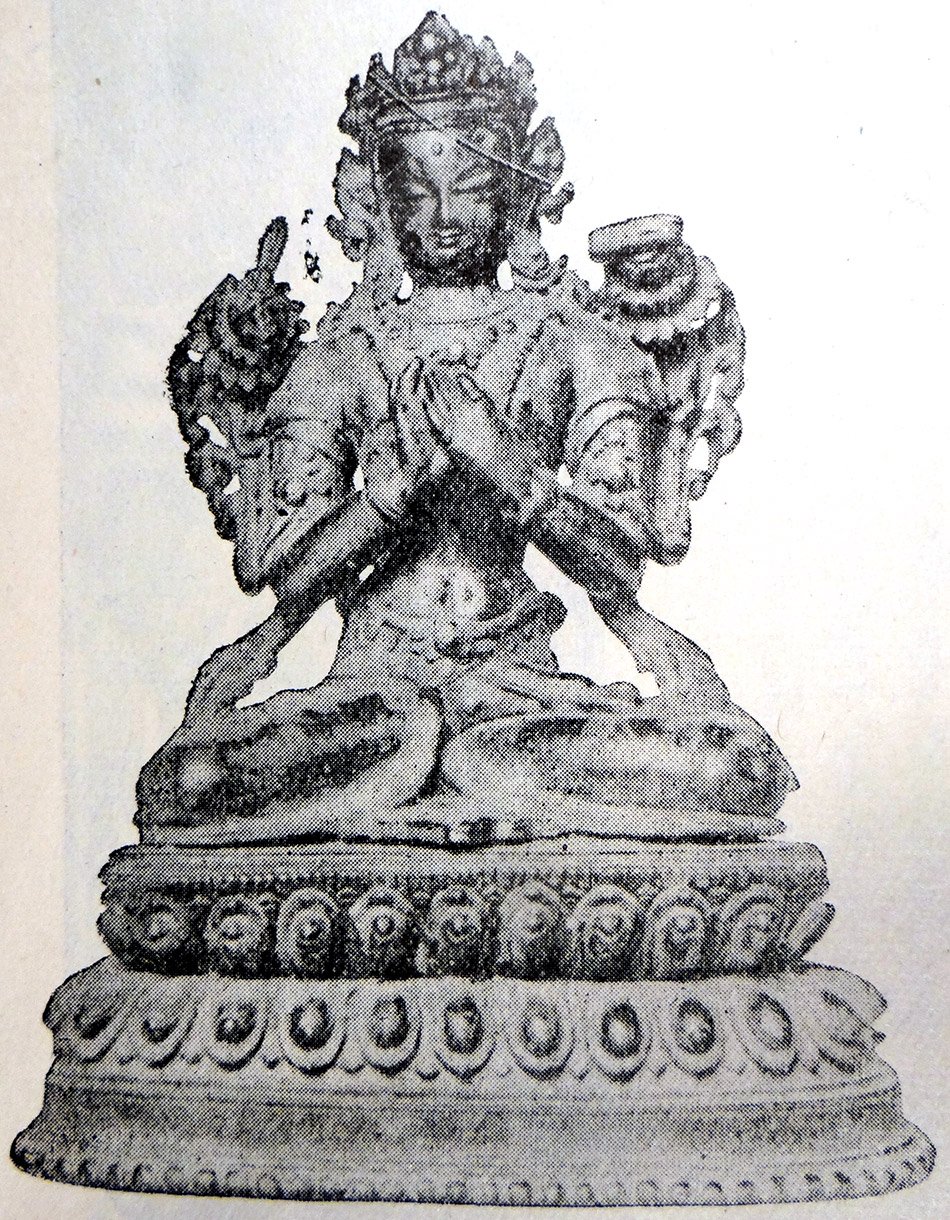The Indian Buddhist Iconography
by Benoytosh Bhattachacharyya | 1958 | 51,392 words | ISBN-10: 8173053138 | ISBN-13: 9788173053139
This page contains an iconography image of Manjushri Manjuvara and represents figure 83-86 of the book Indian Buddhist Iconography, based on extracts of the Sadhanamala English translation. These plates and illustrations represent either photographs of sculptures or line-drawing reproductions of paintings or other representations of Buddhist artwork.
Figure 83-86 - Mañjuśrī Mañjuvara
 Figure 83: Mañjuvara (Birbhum) |
 Figure 84: Mañjuvara (Indian Museum) |
 Figure 85: Mañjuvara (Indian Museum) |
 Figure 86: Mañjuvara (Nepal) |
Two Sādhanas in the Sādhanamālā are devoted to the worship of Mañjuvara who is widely represented. He is yellow in colour, sits on the back of a lion, in the Lalita or the Ardhaparyaṅka attitude, and displays the sentiment of Śṛṅgāra (amour) lavishly. His two hands are joined against the chest in forming the Dharmacakra mudrā which is the eternal symbol of instruction on the secrets of Dharma. He holds the stalk of one or two lotuses on which appears the Prajñāpāramitā manuscript.
According to a second Sādhana Mañjuvara should have the lotus in his left hand with the Prajñāpāramitā on it. He may sit in the Ardhaparyaṅka attitude and may be accompanied with the fierce god Yamāntaka of blue colour, whose face distorted with bare fangs is terrible to behold. Yamāntaka carries the staff in one of his hands and touches the feet of Mañjuvara with the other.
The image (Fig. 83) discovered at Bara in the district of Birbhum in Bengal probably represents this form of Mañjuśrī, with the miniature figures of the five Dhyāni Buddhas over the head, and of the two divinities to the right and left of him. The figure to the right probably represents Sudhanakumāra and the figure to the left is Yamāntaka. The principal god here displays the Dharmacakra mudrā and from under his left armpit rises a lotus which bears the Prajñāpāramitā manuscript as required by the Sādhana. The lotus to the right is added in order to maintain the balance with the lotus to the left.
The lion vehicle of Mañjuvara is sometimes absent, and in later images he may be found sitting in the Paryaṅka or any other attitude (Fig. 84). The lotus to the right which is not expressly required by the Sādhana sometimes bears the book (Fig. 85), and sometimes the sword in order to preserve the balance in a better way (Fig. 86). One of the two Indian Museum images of Mañjuvara has on either side of the god two feminine figures which no doubt represent the two wives of Mañjuśrī, Keśinī and Upakeśinī. Mañjuvara is well known in Tibet.
Colour: golden yellow;
Mudrā: dharmacakra;
Āsana: lalita or ārdhaparyaṅka;
Symbol: prajñāpāramitā on lotus;
